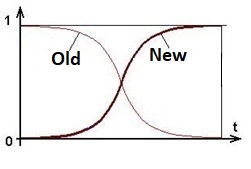Inovacijai reikalinga Eksnovacija!

Pasaulio Taikai, Pažangai ir Gerovei reikia ne tik Inovacijų, bet svarbiausia - Eksnovacijų - senų požiūrių, technologijų, produktų ir kitų gyvenimo dalykų gamybos nutraukimo, utilizavimo ir atvėrimo erdvės naujovėms.






